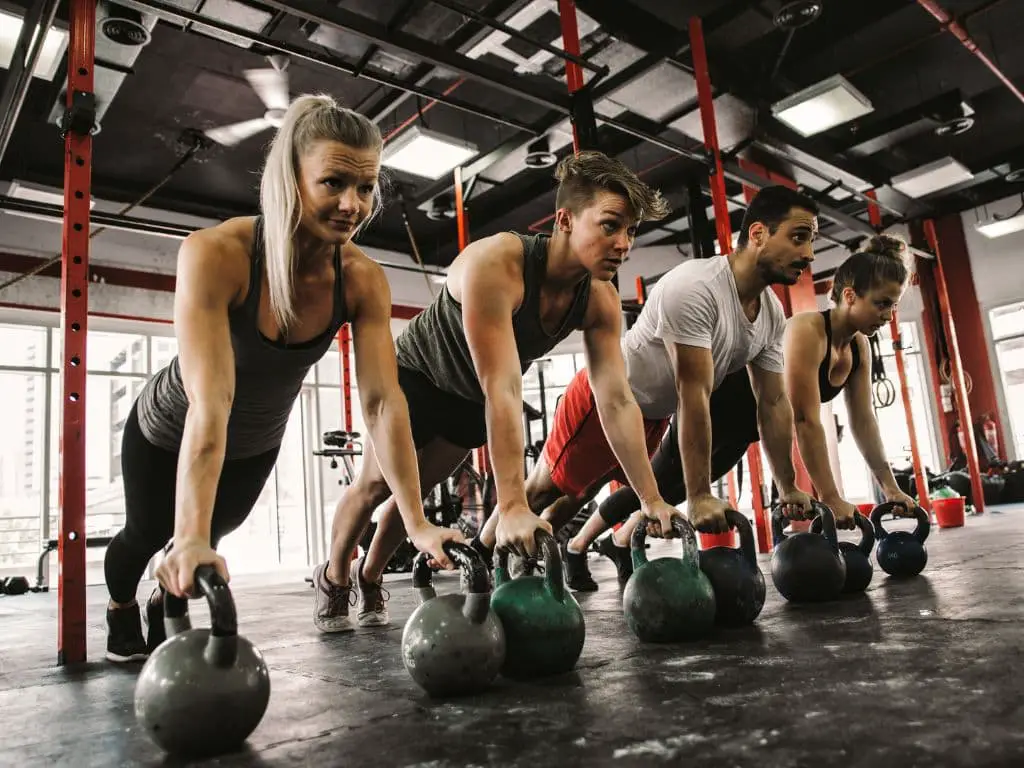Is a 20-Minute Workout Enough?
A 20-minute workout can be an effective way to exercise, provided it is high intensity. With focused effort, a short workout can build strength, improve cardiovascular fitness, and support weight loss goals. The key is ensuring the workout is tailored to your specific needs and performed at a challenging level.
A 20-minute workout can be effective if it is high-intensity and targets multiple large muscle groups. It can build strength, improve cardiovascular fitness, and support weight loss goals. However, for optimal results, each major muscle group should be targeted 2-3 times per week with a day of rest in between for recovery.

Is a 20-Minute Workout Enough to Build Muscle?
To build muscle, intensity is crucial. A 20-minute high-intensity strength training routine can be sufficient to build muscle, especially for beginners. Compound exercises like squats, deadlifts, and pushups that work multiple large muscle groups are most effective. Focusing on progressively overloading the muscles with heavier weights or harder bodyweight exercises helps maximize muscle growth.
It’s also important to target each major muscle group 2-3 times per week. Rotating between upper body, lower body, and core exercises helps achieve this. Allowing a day of rest between strength sessions gives muscles adequate recovery time to repair and grow.
While a 20-minute session can stimulate strength gains, longer 30-60 minute workouts may build muscle more effectively. Advanced lifters often require more volume to continue progressively overloading the muscles. But for time-pressed beginners, a focused high-intensity 20-minute workout is a great start.
Is a 20 Minute Kettlebell Workout Enough?
Kettlebell workouts are extremely effective at both building strength and getting your heart rate up. Their versatility allows users to perform ballistic exercises that recruit multiple large muscle groups for an efficient, high-intensity training effect.
A properly structured 20-minute kettlebell session can pack a serious punch. Focus on foundational kettlebell exercises like swings, squats, lunges, presses, and Turkish get-ups. Move dynamically from one exercise to the next with minimal rest. Use a challenging weight that fatigues muscles by the end of a set.
For continued adaptation, increase the kettlebell weight as you get stronger. A 20-minute kettlebell workout one to three times per week, alongside other training, can definitely yield impressive strength and conditioning improvements.
Is a 20 Minute Leg Workout Enough?
It is possible to complete an effective 20-minute leg workout by choosing the right exercises and training with intensity. Prioritize compound moves like squats, lunges, and leg presses that work multiple major muscle groups in the legs including the quads, hamstrings, and glutes. Focus on progressively lifting heavier weights and reaching muscular fatigue in the 8-12 rep range.
Moves like walking lunges, jump squats, lateral lunges, and Bulgarian split squats can really maximize muscle overload in a short time. Finish with targeted isolation exercises for the calves like raises and tibialis work. Maintaining a rapid pace with minimal rest between sets helps complete the workout quickly while keeping the heart rate elevated.
For optimal results, aim for at least 2-3 progressive 20-minute leg sessions per week. While longer leg workouts may elicit greater strength gains, a focused high-intensity 20-minute routine can still yield lower body improvements.
Is a 20 Minute Glute Workout Enough?
It’s possible to fit an effective glute strengthening workout into just 20 minutes. The key is focusing on compound exercises that intensely activate the glutes like squats, lunges, hip thrusts, and deadlifts.kettlebell swings also provide a great glute challenge.
Do 2-4 sets of 10-15 reps of each exercise, focusing on progressively increasing the resistance each workout. Maintain minimal rest between sets to keep the heart rate up. Prioritize proper form and squeezed glute contractions on every rep.
For further glute toning, add isolated moves like glute bridges, clamshells, and donkey kicks for a few sets at the end. Performing this targeted 20-minute glute routine 2-3 times per week alongside full body workouts can sculpt a stronger, rounder backside over time. While longer sessions may be better for advanced lifters, a 20-minute glute-focused circuit is efficient and effective.
Is a 20 Minute Dumbbell Workout Enough?
With dumbbells, a 20-minute full-body workout can be sufficient to build strength and muscle when performed properly. Choose compound exercises like squats, lunges, rows, presses, and thrusters that engage multiple large muscle groups with each move.
Use challenging weights that fatigue muscles in the 10-15 rep range. Allow minimal rest between sets and superset opposing muscle groups to maximize intensity (like pairing bicep curls with tricep extensions). Prioritize overloaded progressive sets each session.
For variation, try clustering sets – doing 3 exercises back-to-back twice for several rounds. Focus on technical execution and muscle contraction. While longer dumbbell workouts may increase hypertrophy, strategic programming allows a 20 minute session to effectively enhance strength and physique. Aim for at least 2 total body workouts weekly.
Is a 20 Minute Chest Workout Enough?
Creating an effective chest workout in 20 minutes comes down to exercise selection and intensity. The key chest exercises to include are pushups, bench presses, and plyometric pushups or dips to maximize muscle overload.
Do 2-4 sets of each exercise for 8-12 reps, using a challenging weight that fatigues the chest muscles by the final reps. Minimize rest to 30-60 seconds between sets. Maintain proper pushup and bench press form to keep tension on the chest.
Adding supersets like combining dumbbell flyes with pushups can further intensify the workout. While longer chest sessions may build more strength, a 20-minute routine hit 2-3 times a week alongside full body training can still spur chest and tricep gains over time.
Is a 20 Minute Ab Workout Enough?
A 20-minute core workout can be an efficient way to build abdominal strength. The key is focusing on effective bodyweight exercises that intensely engage the abs and obliques without straining the back.
Aim for 2-4 sets of 10-20 reps of planks, hollow holds, deadbugs, V-ups, bicycles, Russian twists, and other multi-plane movements. Progress by adding resistance or increasing time under tension. Maintain good form and braced core engagement throughout. Minimize rest to keep the heart rate elevated.
For variation, add moves like mountain climbers, flutter kicks, and ab wheel rollouts. While longer core sessions allow more volume, a 20-minute ab circuit performed 2-3 times weekly alongside full body training can improve front, side, and transverse core strength. Adding pelvic floor exercises expands the benefits.
Is a 20 Minute Arm Workout Enough?
It’s possible to complete a well-rounded arm toning routine in just 20 minutes. Include exercises that target the biceps, triceps, and shoulders for balanced development.
For biceps, incorporate chinups, dumbbell curls, and hammer curls, doing 2-4 sets of 10-12 reps with challenging resistance. Do overhead tricep extensions, kickbacks, and bench dips for triceps. For shoulders, lateral raises, front raises, and Arnold presses strengthen all heads of the deltoids.
Minimize rest to 60 seconds between sets. Superset bicep and tricep moves to maximize efficiency. While longer sessions allow greater volume, a 20-minute arm circuit performed 2-3 times weekly alongside full body workouts can build definition. Increase weights as you get stronger for continued gains.
Is a 20-Minute Workout Enough to Lose Weight?
For weight loss, the key is exercising at high enough intensity to elevate your heart rate into the fat burning zone for the full 20 minutes. This means maintaining a pace that keeps your heart rate between 70-85% of your maximum heart rate.
Choose cardio exercises like running, cycling, rowing or circuit training using body weight, resistance bands, or light weights. The goal is sustaining sufficient intensity and effort continuously without rest breaks to maximize calorie burn in 20 minutes.
Studies show working out for at least 20 minutes per session helps stimulate fat loss, provided the workout remains challenging enough to get your heart pumping. To increase benefits, aim for 20-60 minutes of high-intensity exercise at least 3-5 days per week alongside a calorie-controlled diet.
Is a 20 Minute Pilates Workout Enough?
While many Pilates workouts are 60 minutes, a well-structured 20 minute session can provide excellent strength and flexibility benefits. The key is maintaining continuous engagement by flowing smoothly between exercises that target all major muscle groups.
Focus on foundational Pilates moves that challenge core stability, mobility, balance and coordination. Incorporate plank variations, hundreds, rolls ups and roll downs, criss cross, swimming, leg circles, and bridges leveraging the Pilates principles of control, precision, and breath.
Aim to complete several sets of each exercise for 8-15 controlled reps. Proper form and technique is key. While more time allows greater volume, a 20 minute Pilates circuit 2-3 times per week provides an efficient strength and flexibility boost supplemented by full body training.
How Effective Is a 20-Minute High-Intensity Interval Training (HIIT) Workout?
HIIT workouts, usually 20-30 minutes long, are extremely time efficient and effective for cardiovascular fitness and fat burning. HIIT involves alternating short bursts of intense anaerobic exertion with recovery intervals.
Studies show 20-minute HIIT sessions 3 times per week can significantly improve VO2 max, decrease body fat, and support weight loss comparable to longer workouts provided the intensity pushes near maximum effort. Popular HIIT protocols like Tabata, EMOMs, and AMRAPS pack a serious punch in 20 minutes.
The key is sustaining high energy output during the work intervals – usually 20-60 seconds near 85-95% max heart rate for one’s fitness level. This challenges the muscles and cardiovascular system for rapid improvements. 20-minute HIIT workouts burn calories and enhance aerobic power efficiently.
How Often Should You Do a 20-Minute Workout?
For general health and fitness benefits, aim for 20-60 minutes of exercise at least 3-5 days per week. A 20-minute workout can count toward this daily activity goal. The best frequency depends on your training goals:
- For cardiovascular endurance, do 20 minutes of moderate-high intensity cardio 3-5 days per week.
- For strength training, complete 20-minute resistance sessions 2-4 times weekly allowing muscle recovery. Increase weight regularly.
- For weight loss, 5-6 20-minute workouts weekly may maximize calorie burn alongside a reduced calorie diet.
- For HIIT training, every other day allows sufficient recovery between intense intervals.listening to your body and adjusting as needed is wise to avoid overtraining with frequent high intensity 20-minute workouts. Quality over quantity is key for long term consistency.
What Do Fitness Experts Say About 20-Minute Workouts?
Many fitness experts support 20-minute workouts as an efficient way to improve fitness and accommodate busy schedules. They highlight these keys for effectiveness:
- Choose exercises wisely to maximize muscle work and heart rate spikes. Compound and multi-joint moves are best.
- Maintain high intensity with challenging weight/resistance to fatigue muscles in each short session.
- Minimize rest periods to elevate heart rate for fat burning benefits or greater strength stimuli.
- Focus on good form and muscle contraction – quality over quantity of reps.
- Increase difficulty weekly by adding weight, reps, sets, or exercise duration.
While longer 60+ minute workouts can provide greater benefits, a focused effective 20-minute workout is much better than no workout. They can boost strength, endurance and support weight loss when programmed wisely.
Frequently Asked Questions
-
Can you build muscle at age 80?
However, seniors who put in the effort can make significant strength gains. Stacy Schroder from Masonic Village, Elizabethtown said that even in your 80s your body has the ability to increase muscle mass.
-
Do legs get thinner with age?
Did you know that older people tend to have smaller arms and legs? It becomes more difficult to maintain healthy muscles as we get older. Their strength decreases as they age, increasing the risk of falling and fractures.
-
Does Coke count as water intake?
Can I count caffeinated beverages like CocaCola towards my daily recommended water intake? Yes. Yes. Sparkling soft drinks include reduced sugar and no calories options. They also contain between 85 and 99 percent water which can quench your thirst. You didn’t know this?
-
Do home workout videos really work?
Are home exercises effective? Yes, it is. It can work just as well at home as going to the gym if you’re willing to invest some time and effort.
-
Is 20 minutes workout enough?
According to the American College of Sports Medicine, adults should be able to do at least 30 minutes of aerobic exercise 5 days a week OR 20 minutes of vigorous activity three days a week.
-
Are there any free exercise programs on TV?
FitOn was launched in 2019 and offers hundreds of live streaming and on-demand workouts. These include cardio, strength training, HIIT and yoga.
-
What kind of protein is best for seniors?
Although exercise enthusiasts have used protein supplements for years to build muscle, research has shown that whey protein is the best protein source to help seniors who are unable to recover muscle from long hospital stays or inactivity.
-
How much water should an elderly person drink?
You should drink one-third your bodyweight and consume the same number of fluids. If you are 150 pounds and drink 50 ounces daily, that’s fifty ounces.
-
Why do the elderly not want to drink?
There are many reasons why you might refuse to eat or drink. These include physiological changes as a result of aging and mental disorders such as dementia and depression.
-
Are there any free exercise shows on TV?
Exercise TV offers a variety of programs including stretching, yoga, Pilates and walking. It also includes abs training and cardio exercises. You can find programs that suit every level of fitness, from beginners to experts. You can also access exercise channels free of charge if you own an Apple TV or Roku.
-
Is walking 1 mile a day enough?
Walking a mile per day is sufficient for older people or those who are sedentary and want to get fit. Other individuals should exercise 150 minutes per week in moderate aerobic activity, but it is more than one mile per day.
-
Is a 20 minute workout effective?
You can get a great workout in 20 minutes, depending on your level of fitness.
-
What causes moaning in elderly?
Our Comfort Keepers are looking for signs of pain such as the following: Face expressions: Patients with dementia may frown or close their eyes when feeling pain. Vocalizations may indicate that the patient is experiencing pain by a greater level of moaning, crying out or grunting.
-
Is Daily Burn free with Amazon Prime?
Amazon. com Subscribe to Prime Video. Prime Video Channels allows you to choose the channels that interest you. Members can only add Daily Burn to their account and access 100+ additional channels without cable.
-
Why do the elderly lose their balance?
A long-term condition that has a negative impact on the nervous system may also affect balance. Multiple Sclerosis, Alzheimer’s Disease, Parkinson’s and Alzheimer’s are just some of the many. Unsteadiness can also be caused by arthritis, heart disease, or certain medication seniors are taking for chronic diseases.






